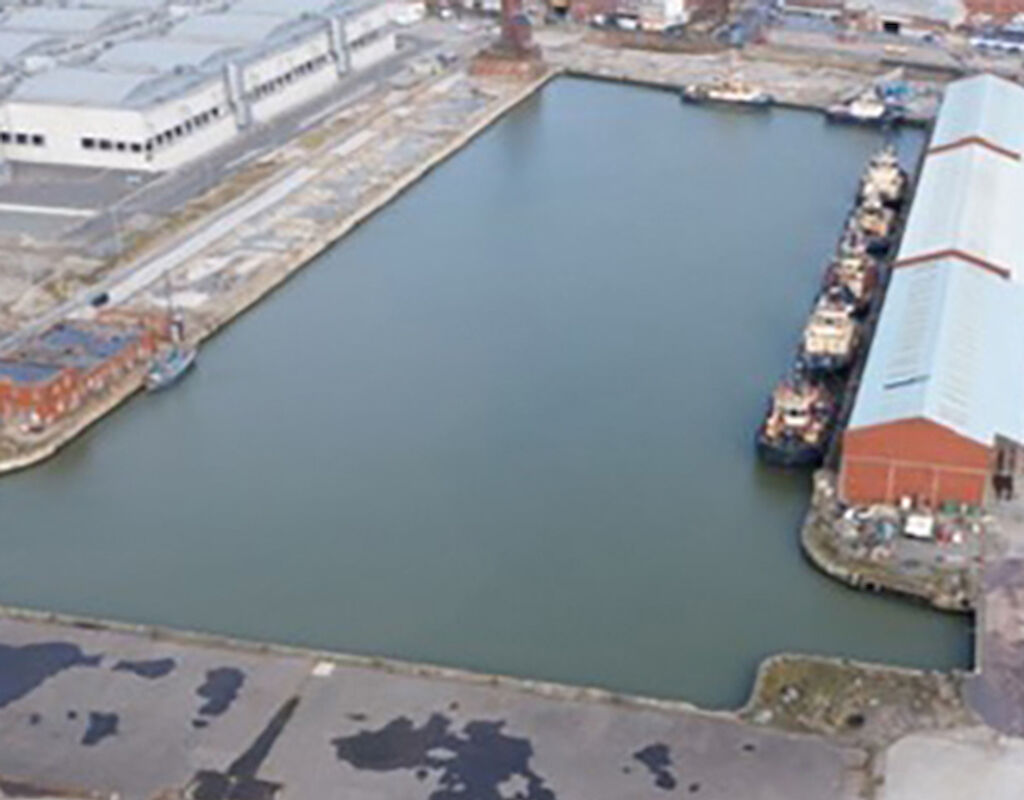Laing O’Rourke - Peoples Stadium

The People’s Project – Everton Stadium involved infilling the existing Bramley-Moore Dock to enable the permanent works to be constructed.
To allow construction works to commence within BMD a number of enabling works were required at the passage between Sandon Half Tide Dock and BMD. This allowed an isolation structure to be built to retain the sand infill which was used to fill BMD to foundation level.
Project Details
Everton Football Club (EFC) procured and developed a New Stadium located in Bramley-Moore Dock in Liverpool. The stadium is part of a wider masterplan for Liverpool Waters, a regeneration of 60 hectares of historic docklands site to create a world-class, high quality, mixed use waterfront quarter in central Liverpool.
The Bramley-Moore Dock (BMD) retaining walls are a Grade II Listed Structure, the provisions for which includes all historic fixtures and fittings attached thereto and all elements are therefore important from an industrial heritage perspective. The dock itself dates to the mid-1800’s and is adjacent to Nelson Dock to the south and Sandon Half Tide Dock to the North. Access to and from BMD to these adjoining docks was controlled by mitre Dock Gates which are also incorporated in the Grade II Listing.
Hughes Subsea were contracted to carry out various diving scopes to allow the stadium enabling works to be progressed. Works included condition inspections, including the sizing of defects and voids, the design of gate securing structures and the development remedial work methodologies. Following client approval of proposals Hughes remobilized to site to undertaken the installation of the temporary works.
One such element of the works was the installation of gate securing brackets as illustrated below. Cores were drilled into the granite blockwork to accept threaded bars resin anchored into place. The brackets were then installed allowing the fragile gates to be drawn into the recess; protecting them from further accidental impact / damage.
Due to the historic nature of the site all works had to be designed to be removable such that should dredging of the dock be carried out all of the existing features could be reinstated. This meant that, for instance, all grout bagwork had to be laid on a visqueen sheet to prevent it from bonding to the underlying stone blockwork.
Hughes Subsea mobilized surface supplied diving equipment, with hydraulic tooling, to carry out amongst others the following activities:
- As found inspections of quay wall infrastructure and dock features including
- Lock gates
- Lock gate recesses including flushing culvert
- Sunken barges
- Culvert recesses, culvert panels and winding mechanisms
- Quay walls and lock soffits
Hughes subsequently carried out remedial works including but not limited to:
- The installation of gate securing steel work and brackets to mitigate against the future deterioration of the gates
- The infilling and blocking of culverts and flushing culverts with hand placed grout filled bags
- The installation of a circa 3m square steel blanking plate and rubber gasket
- The installation of settlement monitoring software for use during dock infilling operations.










